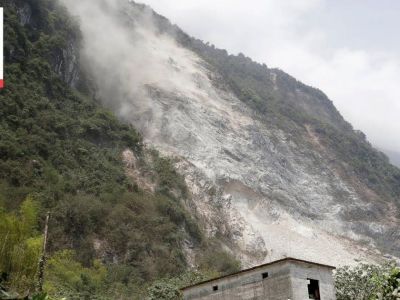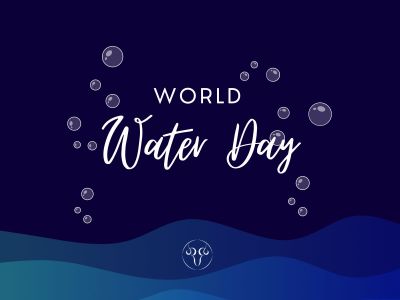Bioremediation - Things About Bio remediation

Our Earth, thankfully, has built-in environmental repair processes. Natural groundwater and soil cleanup, however, takes a long time. Human activities generate a wide range of byproducts. Organic and inorganic residual chemicals are left behind by agricultural, mining, manufacturing, and other industrial operations. Some are inert and safe, while many are poisonous and extremely harmful to the environment, especially the soil and groundwater. Bioremediation could be possible solution for dealing with this load of shit.
What is bioremediation?
Bioremediation, in its broadest sense, refers to any process in which a living or dead biological system (typically bacteria, microalgae, fungi, and plants) is used to remove environmental pollutants from air, water, soil, flue gases, industrial effluents, and so on, in natural or artificial settings. The natural ability of organisms to adsorb, collect, and degrade familiar and developing contaminants has sparked interest in using biological resources to treat contaminated environments.
Where and Why bioremediation is better than conventional waste treatments?
Bioremediation may offer significant advantages over traditional physicochemical treatment approaches because it aspires to be sustainable, eco-friendly, inexpensive, and scalable. The majority of bioremediation is unintentional and involves native organisms.
Bioremediation research is largely focused on accelerating the process by inoculating a polluted region with organisms or providing nutrients to boost development. In theory, bioremediation might be employed to lessen the impact of anthropogenic byproducts such as industrialization and agricultural processes. Bioremediation may prove to be less expensive and more sustainable than other cleanup options.
What are types of Bioremediation?
There are two way to classify Bio remediation, one is through what biological entity used and secondly where bio remediation process is occurring
Types of Bio remediation
1. Phytobioremediation
Living plants are used in phytoremediation technologies to clean up contaminated soil, air, and water. It is defined as "the utilisation of green plants and the associated microbes, together with correct soil amendments and agronomic practises to either contain, remove or render harmful environmental toxins harmless". The phrase is a combination of the Greek phyto (plant) and the Latin remedium (remedy or restoring balance). Despite its low cost, phytoremediation has yet to be shown to address any substantial environmental concern to the extent that contaminated space has been restored.
2. Mycobioremediation
Mycoremediation is a type of bioremediation that uses fungi to clean up polluted soils and streams, including groundwater. Fungi are well-known for their ability to colonise a wide range of heterogeneous settings and adapt to complicated soil matrices, even in harsh circumstances. Pleurotus, Aspergillus, Basidiomycetes, and Trichoderma have been proven to remove lead, cadmium, nickel, chromium, mercury, arsenic, copper, boron, iron, and zinc from coastal habitats, wastewater, and land. Fungi have been shown to be a cost-effective and environmentally friendly method of eliminating a wide range of toxins from contaminated sites.
3. Microbial Bioremediation
Microorganisms break down contaminants by using them as a food source or metabolizing them with a food source. There are aerobic bacteria, and then there are anaerobic bacteria. Aerobic processes require an oxygen source, and the end products typically are carbon dioxide, water and salts. Anaerobic processes are conducted in the absence of oxygen, and the end products can include methane, hydrogen gas, sulfides, elemental sulfur and dinitrogen gas.
Types of Bio remediation techniques
Additional nutrients, vitamins, minerals, and pH buffers are supplied in both procedures to boost microbial growth and metabolism. Specialized microbial cultures are sometimes added (biostimulation). Phytoremediation, bioventing, bioattenuation, biosparging, composting (biopiles and windrows), and landfarming are some examples of bioremediation-related technologies. Thermal desorption, vitrification, air stripping, bioleaching, rhizofiltration, and soil washing are some more remediation approaches.
1. In situ(On site) methods, which treats polluted sites directly, types and examples of Onsite Bioremediation methods :-
Intrinsic Bioremediation
Because soil and water are always contaminated with poisons and pollutants, the process of intrinsic bioremediation is most effective in these two biomes. Intrinsic bioremediation is commonly applied in subsurface locations such as underground petroleum tanks. It is difficult to notice a leak at such a location, because impurities and chemicals can enter through these leaks and pollute the fuel. Only microbes can thus eliminate toxins and clean the tanks.
Bioventing
Bioventing is a procedure that increases the flow of oxygen or air into the soil's unsaturated zone, which increases the rate of natural in situ breakdown of the targeted hydrocarbon pollutant. Bioventing is the most prevalent type of oxidative bioremediation procedure in which oxygen is used as an electron acceptor for the oxidation of petroleum, polyaromatic hydrocarbons (PAHs), phenols, and other reduced pollutants.
Biostimulation
Bacteria that are naturally present can do bioremediation. The population of these beneficial bacteria can be raised through biostimulation by introducing nutrients.
Bioattenuation
Biodegradation happens naturally during bioattenuation due to the presence of nutrients or microbes. The indigenous microorganisms present will regulate metabolic activity and serve as a natural attenuator. Despite the fact that there is no anthropogenic involvement in bioattenuation, the contaminated site must be monitored.
Bioaugementation
The inclusion of archaea or bacterial cultures is required to accelerate the rate of breakdown of a pollutant. Organisms originating in contaminated environments may already be capable of breaking down trash, albeit inefficiently and slowly. Natural attenuation uses natural mechanisms to reduce or "attenuate" pollutant concentrations in soil and groundwater. Scientists monitor these circumstances to ensure that natural attenuation is effective.
Bioslurping
Bioslurping is a remedial technology that combines bioventing with vacuum-enhanced free-product recovery. Bioventing promotes aerobic bioremediation of hydrocarbon-contaminated soils. LNAPLs are removed from the capillary fringe and the water table using vacuum-enhanced free-product recovery.
Biosparging
The technique of injecting oxygen and maybe nutrients into groundwater is known as biosparging. When oxygen is introduced, indigenous bacteria are stimulated to accelerate their decomposition. Biosparging, on the other hand, concentrates on saturated contaminated zones, notably those related to ground water treatment.
2. Ex situ(Off site) methods which are applied to excavated materials
Slurry Bioreactors
Slurry Bioreactors are mostly used to treat non-halogenated SVOCs and VOCs in excavated soils or dredged sediments. To treat PCBs, halogenated SVOCs, insecticides, and ordnance chemicals, sequential anaerobic/aerobic slurry-phase bioreactors are used.
Biopiles
Biopiles, like bioventing, are used to eliminate petroleum pollutants in contaminated soils by injecting aerobic hydrocarbons. The soil, on the other hand, is excavated and heaped with an aeration system. By providing oxygen under positive pressure or removing oxygen under negative pressure, this aeration system stimulates microbial activity.
Composting
Composting is defined as the biological breakdown of heterogeneous solid organic materials under controlled wet, self-heating, and aerobic conditions in order to produce a stable substance suitable for use as organic fertiliser.
Windrows
Windrow systems are similar to compost processes in that soil is stirred on a regular basis to improve aeration. This repeated rotation also allows toxins in the soil to be uniformly disseminated, which speeds up the bioremediation process.
Landfarming
Landfarming, sometimes known as land treatment, is a common approach for dealing with sludge leaks. By cyclically rotating the earth, polluted soil is dispersed and aerated. This is an above-ground application, and polluted soils must be shallow in order to stimulate microbial activity. If the pollution is deeper than 5 feet, the soil must be dug to above ground level.
How Genetic engineering can help bioremediation?
Preliminary research is being conducted on the use of genetic engineering to generate organisms specifically intended for bioremediation. In the organism, two types of genes can be inserted: degradative genes, which encode proteins essential for pollutant decomposition, and reporter genes, which can monitor pollution levels. Pseudomonas members have also been changed with the lux gene, but this time for the detection of the polyaromatic hydrocarbon naphthalene. On a somewhat large scale, a field test for the discharge of the modified organism was successful.
To treat oil spills and break down particular polymers, genetically modified organisms have been developed (PET).
Can radioactive wastes could be Bio remediate?
Answer is Yes, it is possible to bio remediate radioactive waste. Bioremediation of radioactive waste, also known as radionuclide bioremediation, is a type of bioremediation that employs biological agents such as bacteria, plants, and fungi (natural or genetically modified) to catalyse chemical processes that allow radionuclide decontamination of sites. It has been shown that some species of Penicillium, Cladosporium, Paecilomyces and Xerocomus are able to use ionizing radiation as energy through the electronic properties of melanins.
What are the uses of Bioremediation and pros and cons of bioremediation?
Bioremediation helps clean up water sources, create healthier soil, and improve air quality around the globe. But unlike excavation-based remediation processes, which can be disruptive, bioremediation is less intrusive and can facilitate remediation of environmental impacts without damaging delicate ecosystems.
- Environmentally friendly: At its foundation, bioremediation is a method of removing unwanted environmental impacts. This benefits both individual human health and the overall health of the environment. Bioremediation helps to clean up water supplies, develop healthier soil, and improve global air quality. However, unlike traditional remediation techniques, which can be disruptive, bioremediation is less intrusive and can permit environmental impact rehabilitation without harming fragile ecosystems.
- Bioremediation technology is extremely scalable, treating everything from small landfills to large water treatment plants. Sewage treatment plants, for example, are the world's largest bioremediation operation, with roughly 34 billion gallons of wastewater collected and processed every day in the United States alone. The sheer size of this operation demonstrates how adaptable bioremediation is.
- Cost-Effective: If you are in charge of a cleanup project, you are aware that environmental interventions are not inexpensive. Fortunately, bioremediation can be a low-cost method. Utilizing bioremediation to treat a hazardous waste site is typically much less expensive than using conventional treatment procedures.
What are some of the Limitations of Bio remediation?
The primary limitation of bioremediation is that not all substances are biodegradable, limiting the bioremediation process. Some of the other factor that limit bio remediation are,
- Some people are concerned that biodegradation products would be more persistent or harmful than the parent molecule.
- Extrapolating from bench and pilot-scale investigations to full-scale field operations is tough.
- Biological processes are frequently very particular. The availability of metabolically competent microbial populations, proper environmental growth conditions, and appropriate quantities of nutrients and pollutants are all important site criteria for success.









